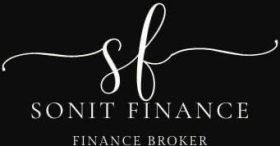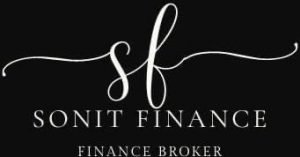Commercial real estate lenders are maintaining a positive outlook despite ongoing global uncertainty, with most planning to increase their loan portfolios in the coming months. According to the CBRE Lender Sentiment Survey, 56 percent of lenders expressed intentions to grow their commercial real estate exposures, while none of the surveyed lenders planned to decrease their lending activities.
The survey, which gathered responses from 34 commercial real estate lenders, revealed steady demand for commercial mortgages over the past year. The industrial and logistics sector continues to dominate investment preferences among lenders, followed closely by residential property. Build-to-rent properties ranked third in popularity, showing a slight increase in interest compared to the second half of 2024.
Student accommodation has emerged as a significant area of interest, with nearly a quarter of lenders ranking it among their top two preferences. Meanwhile, lenders maintain a cautious approach toward office real estate, reflecting ongoing concerns about the sector’s performance.
Data centres, which were highly favoured in the second half of 2024, have seen a decline in preference, dropping from third to fifth place among lenders’ priorities. This shift indicates changing dynamics in the commercial property landscape. CBRE Research found that asset type and location were among the top three factors influencing lender appetite for refinancing.
Regarding interest rates, more than half of the surveyed lenders anticipate two additional rate cuts during the remainder of 2025. However, there was no consensus among lenders about where the cash rate might stand by June 2026. Andrew McCasker, CBRE’s managing director of debt and structured finance, pointed to strong fundamentals supporting the lending market.
“The domestic banks sit on strong balance sheets and there has been a significant amount of capital raised in the private credit sector,” Mr McCasker said. “This is underpinning competitive tension and strong appetite for lending to quality assets and sponsors.” The office sector continues to face particular scrutiny from lenders. Will Edwards, CBRE debt and structure finance director, said that a selective approach is being taken. “Amid caution in the office sector, we are seeing lenders take a considered approach to the sector reflective of flight to quality in the asset class,” Mr Edwards said.
Despite elevated costs of debt, the overall sentiment among commercial real estate lenders remains positive, with increased appetite for new loans anticipated over the next three months.
COMMERCIAL PROPERTY MARKET POISED FOR GROWTH IN 2026
Australia’s commercial property market is showing signs of recovery after a challenging period, with tentative growth expected throughout 2025 and stronger performance anticipated in 2026.
According to Knight Frank Chief Economist Ben Burston, the worst of the economic news is behind us, with the nascent recovery in commercial property markets largely due to gradual improvement in the macroeconomic outlook since mid-2024. “It started with the commencement of the rate-cutting cycle overseas, which buoyed sentiment,” Mr Burston said.
“Australia has been late to the party, with inflationary pressure more persistent than in other major economies during 2024, but sequential quarterly data releases in January and April have been reassuring and the RBA has now cut rates twice.”
The return to sizeable returns across commercial property sectors will not be uniform, with industrial and logistics properties leading the recovery while office markets are expected to lag behind.
JLL’s latest report reveals the industrial property market is returning to growth as yields begin to compress for the first time since early 2024. National industrial capital value growth is projected to rebound to 8.7 per cent year-on-year over 2025, marking the strongest annual growth since Q3 2022. Annabel McFarlane, Head of Strategic Research at JLL Australia, said there was a significant shift in the market dynamics.
“With global volatility impacting trade and consumer confidence, industrial real estate is increasingly being viewed as a low-risk hedge against equity market and currency fluctuations, which is broadening the investor pool and supporting asset pricing,” Ms McFarlane said.
The report highlighted geographic variations in the industrial sector, with Melbourne accounting for 64.3 per cent of quarterly supply while Sydney recorded just 43,238 sqm, its lowest quarterly completion figure since 2015.
Retail property markets are showing mixed signals despite April’s unexpectedly downbeat results. CBD retail locations have demonstrated strong recovery, with vacancy rates dropping from 11.6 to 10.0 per cent. JLL’s Lee McLaughlin said there were regional variations in retail performance, with Sydney emerging as the standout performer.
“Sydney has emerged as the standout performer, boasting the lowest vacancy rate of 3.9 per cent across all asset sub-sectors,” Mr McLaughlin said. “This represents a significant 1.3 percentage point decrease year-on-year.”
Despite positive signs in various sectors, economic headwinds remain. Australia’s first-quarter economic growth missed estimates, with real GDP expansion at just 1.3 per cent. Natural disasters in 2025 have cost the economy $2.2 billion, while uncertainty from US tariff policies is expected to impact investment and employment.
Mr. Burston remains optimistic about the medium-term outlook. “Commercial property markets will respond to the rate-cutting cycle, and the shift in the outlook raises the prospect of yield compression in the second half of the year, starting in the most favoured core markets,” he said.
NSW GOVERNMENT SET TO RESHAPE THE COMMERCIAL PROPERTY LANDSCAPE
The NSW Government has earmarked $30.8 billion for infrastructure investment aimed at creating new business hubs beyond traditional CBDs. According to Ray White Group Head of Research Vanessa Rader, the substantial infrastructure commitment outlined in the recent budget will establish new commercial nodes throughout Western Sydney, changing how and where commercial development occurs.
“The government is actively repositioning commercial value away from traditional business centres,” Ms Rader said. “Transport investment, health and education infrastructure, and innovation precincts will redefine where and how commercial property is developed.”
The investment includes a $5.5 billion roads package and $123.6 million for Aerotropolis development, which will redirect commercial demand toward transport-oriented and mixed-use precincts across the region.
Innovation and technology sectors receive significant attention with $79.2 million allocated for an Innovation Blueprint and $38.5 million for the Tech Central Hub, designed to attract knowledge-based industries requiring flexible, technology-enabled spaces.
A newly established Investment Delivery Authority will expedite non-residential projects valued over $1 billion, potentially unlocking up to $50 billion in commercial investment annually. Perhaps the most innovative measure is the $1 billion Pre-Sale Finance Guarantee, the first of its kind in Australia.
The scheme will see the state guarantee pre-sales on up to 5,000 apartments, helping developers secure financing to build an estimated 15,000 homes over a five-year period. Treasurer Daniel Mookhey described the guarantee as “a canny use of our state’s balance sheet” designed to overcome feasibility challenges that have stalled construction projects throughout NSW.
“Industry can spend less time and resources having to convince their banks that there are buyers of these apartments and more time building them,” Mr Mookhey said. Ms Rader said it was increasingly important to have creative and mixed-use commercial formats, supported by $586.2 million in creative economy funding. The pre-sale guarantee also has potential to activate integrated developments that combine residential and commercial spaces.
The budget further commits $12.4 billion to health infrastructure and $10.4 billion to education facilities, which are expected to generate stable commercial demand near new precincts in Bankstown, Westmead, Rouse Hill and Wollongong. These growth initiatives come alongside a $9.4 billion reduction in state debt, enhancing fiscal confidence for long-term investors. Treasury now projects a return to budget surplus by 2027-28, though the treasurer cautioned that “a lot needs to go right for us.”
FIVE ADVANTAGES OF A LOW-DOC BUSINESS LOAN
For many small business owners and self-employed Australians, accessing traditional business finance can be frustrating, especially if your paperwork isn’t up to date. Whether you’re newly self-employed, operating a seasonal business, or simply haven’t lodged your latest tax return, you may not meet the criteria set by major lenders. That’s where low-doc business loans come in.
Designed to provide funding without the usual paperwork, low-doc loans are assessed using alternative forms of documentation, like bank statements, BAS, or an accountant’s letter.
They can be a lifeline for entrepreneurs who need quick access to capital without the red tape. Here are five advantages of low-doc business loans that make them a valuable option for many business owners.
Easier access to funds when financials aren’t available
Low-doc loans are a practical solution when tax returns or full financial statements aren’t available. Instead, lenders can assess your application using other documents like recent bank statements or BAS. This flexibility opens up funding opportunities for business owners who would otherwise be knocked back by mainstream lenders.
Faster approval turnaround
With fewer hoops to jump through, the approval process is often faster than standard loans. If timing is critical, say you need to purchase equipment, pay a supplier, or grab a short-term opportunity, a low-doc loan can help you act quickly and keep your business moving.
Flexible lending criteria
Low-doc loans are built for borrowers with non-traditional income structures. Lenders assess your financial position based on current cash flow and business activity rather than relying solely on tax returns. This makes it easier for businesses with seasonal income, recent startup status, or variable earnings to qualify.
Preserves working capital
By using a loan instead of your own funds, you can protect your working capital for day-to-day operations. A low-doc loan can be used to fund expansion, buy stock, or invest in marketing, allowing you to maintain liquidity while still pushing your business forward.
Tailored for self-employed borrowers
Specialist low-doc lenders tend to take a more hands-on approach. They understand the realities of self-employment and often offer repayment structures designed to match your income cycle. This personalised approach makes it easier to stay on top of your loan and reduce financial stress.
If your business doesn’t fit the mould of a traditional borrower, a low-doc loan might be a smart alternative. With the right lender and documentation, it’s possible to access the funding you need on terms that work for your business. Talk to your finance broker to find out more.


